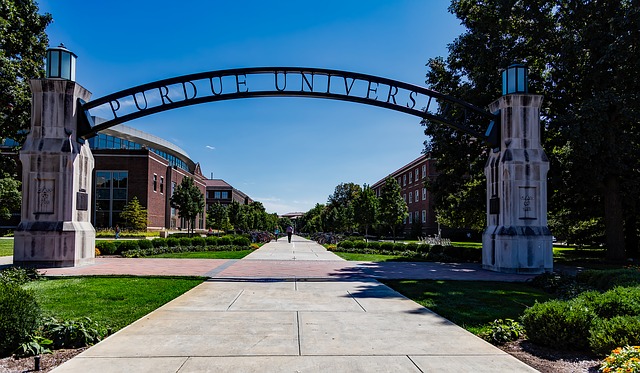Foreign students in the USA – A handy guide on how choose the right college in the US
Are you thinking of studying in the USA? Here are some helpful tips for you!
The USA presents many opportunities for international students looking to join higher learning institutions. International students have a wide selection of schools, including some of the top-rated ones in the world. The challenge comes in finding the right institution to go to. Not every US university is right for you as a foreign student. Some schools have regulations that are too strict for international students.
The program options matter as well when you opt to study in the US because they determine the career prospects you will have after completing studies. International students have to consider many other elements like costs, financial aid opportunities, and study in the USA visa scheme. This guide offers a few critical tips for navigating your university search.

1. Requirements for International Students to Study in the US
The first thing that every potential international student should know is that university applications take time. After picking a US co, the application procedure should begin right away. It could be months before a higher learning institution processes the application. Find out about the application deadline of a particular US co. Of course, you must ensure that you meet every one of the application requirements before sending in your submission.
Students from the EU or overseas have to satisfy specific requirements. Standardized tests are mandatory for all applicants, but foreigners may have different ones. SAT, TOEFL, and IELTS are the common tests that international students have to take. For English certification, colleges can ask for IELTS or TOEFL. The minimum scores required vary from school to school. A majority of colleges use credential evaluators to check the authenticity of the school documents included in your application. The reason for this is that curricula differ from one country to the next. If you are from the UK, some of your secondary school transcripts may not carry the same weight in America. US college foreign students must have their documents compared to the host country’s curriculum. Schools have online portals where international students can check out the application requirements. Look at the specific documents a university asks for and provide them.

The biggest hurdle for international students in the US is a visa. The United States has three kinds of visa for foreign students– F1, J1, and M1. You have to be clear about the distinction between the permits so that you can decide which one suits you. For instance, if you intend to work while studying, the F1 or J1 study in the USA visa is the most appropriate. Note that the type of Visa will also affect the financing options available to you. The visa application process staff considers academic eligibility, health insurance, and financial stability, among other aspects. Visit the official US immigration website to learn about student visas and the requirements. Find out which forms to download for the application procedure.
2. Cheapest and Most Expensive US Schools for Foreign Students
Tuition cost is a significant consideration when choosing a university. The ability of a student to afford the required tuition expenses is one requirement that determines eligibility. Fortunately, international students have a range of alternatives when it comes to the tuition budget. Note that some schools have different fee structures for in-state and out-of-state students, which is the category where international students fall.

The Midwest ranks as the most affordable region for US college foreign students options. Purdue University is one of the affordable choices with a fee of $28,794. Andrews University, Illinois Institute of Technology, University of Iowa, Iowa State, University of Minnesota, Michigan State, Ohio State, and Wichita State are others to look at. The Northeast region is home to some of the top US colleges and consequently, the most expensive. Harvard charges about $42,292 for tuition. In this region, you will find Yale, Princeton, Brandeis, Columbia, University of Pennsylvania, MIT, Johns Hopkins, Brown, and Dartmouth, among others. Some schools give international students the chance to study in the US for free. College of the Ozarks, City University of New York and Berea College are some examples.
3. Popular Universities and Programs for Foreign Students
When sorting out the top US college options for foreign students, several names make the list. Some schools in the US have higher demand among international students than others. Different elements contribute to this popularity like the support that a university offers to international students, the financial aid facilities and visa application assistance. Using enrollment and graduation figures, among other metrics, Princeton University ranks as the most in-demand college for international students.
The top spots go to the Ivy Leagues, including Yale, MIT, and Harvard. Besides colleges, international students have an affinity towards specific programs when they go to study in the US. A majority of foreign students focus on college majors that promise powerful and lucrative careers. STEM is a popular field of study for overseas students in the US with engineering taking the lead. Physical and life sciences, social science and intensive English are other favored programs.
A Few Important Tips
Whether you are going to study in the US for free or pay tuition, make sure you are well prepared. Firstly, know the cost of living in the location you intend to move to. Even when staying at a college campus, you have to factor in your meals, transport, and other necessities. Large cities will typically have higher costs of living than small university towns. Get familiar with the health care system, which can be a tad complex compared to other countries. Be sure that you are covered in the case of medical emergencies. Take the time to learn the restrictions and permissions of your visa. If you are allowed to work while attending a US college, find out the conditions. Establish and maintain communication with parents/guardians, friends and relatives to avoid feeling cut off from home. When it comes to engaging with other students and making friends, visit the social halls. They are some of the places you can find people with similar interests. Social media helps a great deal as well. Go to the school pages on social networks and see if there are communities that you can join. With the right university pick and adequate preparation, studying in the US can be a rewarding experience.

